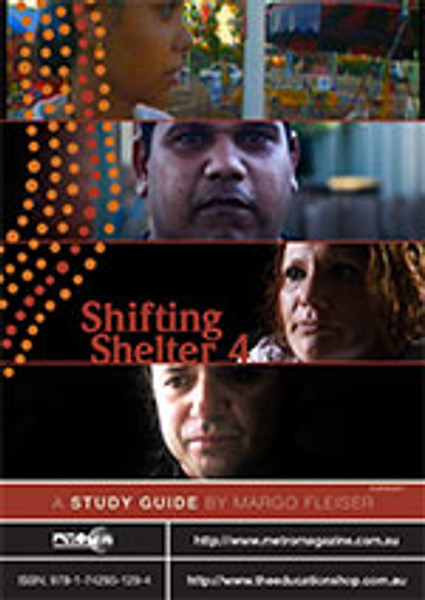Product Overview
This study guide has been created to accompany the documentary Shifting Shelter 4 (Ivan Sen 2010/11). This is the fourth instalment in a longitudinal documentary series spanning over more than fifteen years following the lives of four Aboriginal teenagers in outback New South Wales as they navigate the often-difficult path from adolescence to adulthood and beyond.
Every five years Ivan Sen has returned to the original four characters to see how their lives are progressing. Cindy Peterson, Ben Ballangarry, Danielle Waters and Willy Lamb were Aboriginal teenagers full of life, hopes and dreams in Shifting Shelter 1. In the next instalment, Shifting Shelter 2, they were in their early twenties, had moved out of home and had found the party scene. In Shifting Shelter 3 they were approaching thirty and had started losing their parents and raising their own children. Shifting Shelter 4 finds the four in their thirties with growing families and in a reflective state that offers viewers a powerfully poignant social document.
During the fifteen years that Sen has been filming with Willy, Cindy, Ben and Danielle they have faced many of life's challenges, from drug addiction and rehabilitation, imprisonment, unemployment, depression, domestic violence and teen pregnancies to marriage and relationship breakdowns. Willy, Cindy, Danielle and Ben all speak candidly about their experiences, their regrets and their dreams for the future. Shifting Shelter 4 is a sad reflection on how quickly life can fall apart, especially for those living on the margins of society.
Curriculum Relevance
Shifting Shelter 4could be used as a springboard to discuss the many issues that young people might have to deal with. Some of these issues are:
- Struggle against drug dependence
- Domestic violence
- Relationships and relationship breakdowns
- Teen pregnancies and raising children
- Struggle to earn money and pay bills
- Relationships with parents (including death of a parent)
- Imprisonment
- Unemployment
- Depression
- Loss of hopes and dreams
- The fight to keep those hopes and dreams alive
As such, the film could also be used by school counsellors who are talking to groups about making life choices (for example during Pastoral Care sessions). Activities in the study guide have been designed to help students think through their personal responses to the issues in the film.
The film examines some of the socio-economic factors that affect an individual's health and emotional wellbeing as well as touching on priority health issues for Indigenous Australians and Torres Strait Islander Peoples. It could be used to place much of the theory of the Health and Physical Education Syllabus (PDHPE in New South Wales) into a personal context, giving students an empathetic understanding for the reasons behind the statistics.
This film could also be used as part of a study on current issues affecting Indigenous Australians and Torres Strait Islanders. It would also be useful for tertiary students studying courses such as Social Work, Australian Politics and Government, Indigenous Studies and Public Health.








